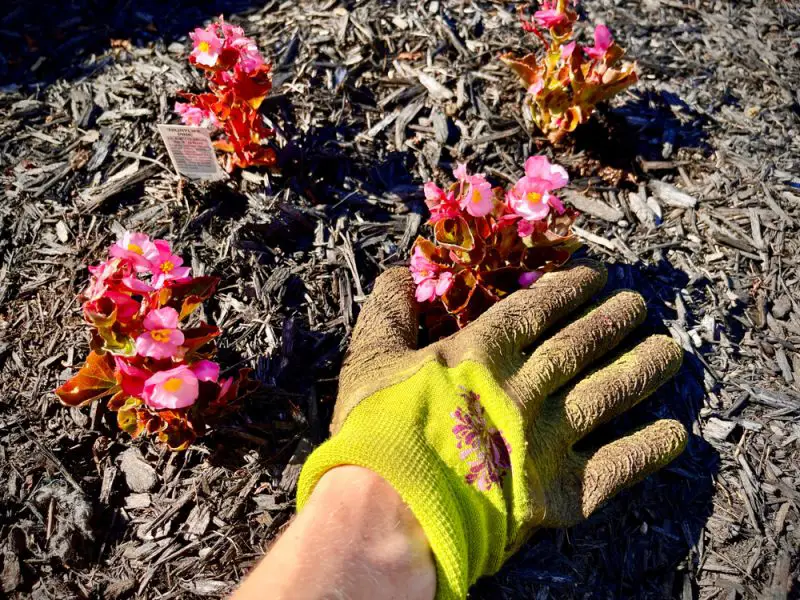Begonias bring vibrant beauty to gardens and containers all summer long, but as cold weather approaches, many gardeners wonder how to keep these tropical plants alive. Whether you’re growing tuberous begonias with bold blooms or wax begonias with glossy leaves, learning how to overwinter them properly can help you enjoy their color year after year—without having to buy new plants each spring.
This guide will show you exactly how to overwinter both tuberous and wax begonias with ease, no matter your climate. From when to dig them up to how to store them safely indoors, you’ll discover simple, effective techniques to protect your begonias from frost and give them a strong head start next growing season.
Understanding Begonia Types and Their Winter Needs

Characteristics of Tuberous Begonias
Tuberous begonias are known for their spectacular blooms and fleshy, underground tubers that act as natural storage organs. These tubers help the plant go dormant during winter and regenerate when warmer weather returns. Typically blooming from midsummer until frost, tuberous begonias cannot tolerate freezing temperatures. As soon as the foliage starts yellowing in fall, it’s a sign the plant is entering dormancy. Gardeners should carefully lift the tubers from the soil, gently remove excess dirt, and allow them to dry in a cool, shaded area for several days. Once dried, they should be stored in a breathable container filled with dry peat moss, vermiculite, or sawdust and kept in a dark, frost-free space at around 40–50°F (4–10°C). With this care, tubers can be replanted in spring for another season of vibrant blooms.
Traits of Wax Begonias
Unlike their tuberous relatives, wax begonias do not produce storage organs and cannot go dormant. These popular bedding plants feature glossy leaves and long-lasting flowers, making them a favorite for containers, borders, and hanging baskets. While often treated as annuals, wax begonias are actually tender perennials and can thrive indoors over winter. To overwinter wax begonias successfully, bring them inside before temperatures dip below 50°F (10°C). Place them in a bright, warm spot away from drafts, and reduce watering to avoid root rot. While the plant may lose some leaves due to environmental changes, it usually rebounds with time. With proper indoor care, wax begonias can continue to grow slowly through winter or at least survive until they can return outdoors in spring.
Preparing Begonias for Overwintering
To successfully overwinter begonias, preparation is key. Once the weather begins to cool and temperatures drop near freezing, it’s time to take action. Timing and technique will vary depending on whether you’re dealing with tuberous or wax begonias.
When to Start the Overwintering Process
Timing is everything when it comes to overwintering begonias successfully. You should begin preparations as soon as nighttime temperatures consistently fall below 50°F (10°C), even if daytime temperatures remain warm. For tuberous begonias, this window is critical—any exposure to frost can quickly damage or destroy the tubers. As soon as foliage begins to yellow or plants start to decline naturally, that’s your cue to lift them from the ground or containers. In contrast, wax begonias, which are more tender, should be brought indoors well before any frost is predicted. Monitor your local weather forecasts closely and plan ahead to avoid sudden temperature drops that could harm your plants.
If you wait too long, tubers may become mushy, and indoor begonias might suffer shock from sudden environmental changes. By starting early and observing your plants carefully, you give them the best chance to thrive again in the next growing season.
Cleaning and Inspecting Plants
Proper cleaning and inspection are essential steps to prevent pests, diseases, and rot from following your begonias into winter storage or indoor conditions. For tuberous begonias, begin by cutting the stems back to about 4 to 6 inches from the base. Carefully shake off any loose soil, but avoid washing them with water, as moisture can encourage rot during storage. Look closely for any soft spots, mold, or signs of fungal infection on the tubers. Discard any that appear unhealthy, or separate them to monitor closely.
For wax begonias, gently remove yellowing or damaged leaves, faded blooms, and any visible pests such as aphids or spider mites. You can also rinse the leaves with a mild insecticidal soap or neem oil solution before bringing them inside. This step significantly reduces the risk of infestations that could affect your other houseplants. Also check the pots for insects hiding in the soil, and consider repotting into fresh, sterile potting mix if needed.
Clean and healthy plants are the foundation of successful overwintering. A little effort now can prevent big problems later.
How to Overwinter Tuberous Begonias
Tuberous begonias are not frost-tolerant, so overwintering them properly is crucial for preserving their tubers and ensuring healthy growth next season. As temperatures drop and the growing season ends, it’s important to lift and store the tubers before they succumb to cold or wet soil conditions. By mimicking their natural dormancy cycle, you can protect them from frost damage and extend their lifespan year after year.
Digging Up and Curing the Tubers
Begin the overwintering process after the first light frost, which signals the plant to enter dormancy. At this point, the foliage will start to yellow and die back. Cut back the stems to about 4 to 6 inches above the soil. Using a garden fork or spade, gently loosen the soil around the base of each plant. Take care not to pierce or bruise the tubers during this step, as damaged tubers are more susceptible to rot.
Once lifted, shake off any excess soil without washing the tubers, which could introduce moisture-related problems. Place the tubers in a single layer in a dry, shaded area with good airflow. Allow them to cure for 10 to 14 days. This period helps the skin toughen and allows any cuts or blemishes to heal. Proper curing reduces the risk of fungal infection and extends the viability of the tubers during storage.
Storing Tuberous Begonias Properly
After curing, inspect the tubers carefully. Discard any that are soft, moldy, or severely damaged. Store the healthy tubers in a breathable container such as a cardboard box, wooden crate, or paper bag. Surround each tuber with a dry, insulating material like peat moss, sawdust, or vermiculite to absorb excess moisture and prevent shriveling.
Place the container in a cool, dark, and well-ventilated area where the temperature remains stable between 40°F and 50°F (4°C to 10°C). Basements, root cellars, or unheated closets often work well. Avoid areas with high humidity or drastic temperature fluctuations.
Throughout winter, check the tubers monthly. If you notice signs of mold, remove the affected parts promptly. Tubers that begin to shrivel may benefit from a light misting with water, but avoid overwatering. With proper care, the tubers will remain dormant and healthy, ready to be replanted when warm weather returns.
How to Overwinter Wax Begonias Indoors
Potting and Transitioning Indoors
When preparing wax begonias for indoor life, choose clean containers with drainage holes and fill them with a lightweight potting mix rich in organic matter. Avoid using garden soil, which can compact easily and retain too much moisture. Before the first frost hits, dig up outdoor begonias gently, preserving as much of the root ball as possible. Repot them into the prepared containers and water lightly to settle the soil.
To minimize stress, start the transition process early. Bring the plants inside for a few hours daily, gradually increasing the time over 7 to 10 days. This allows them to adjust to indoor humidity and temperature changes. Ideal spots include sun-drenched windowsills facing south or areas with consistent artificial light. Keep them away from heat vents and cold drafts, which can shock the plants and trigger leaf drop.
Indoor Care Routine
Once settled indoors, wax begonias enter a slower growth phase. Watering should be minimal but consistent—check the soil weekly and water only when the top inch feels dry. Ensure any excess water drains freely to prevent soggy roots. During darker winter months, begonias may grow leggy; if so, pinch back stems to encourage bushier growth.
Fertilizing isn’t essential every month but can help keep plants healthy—use a diluted balanced liquid fertilizer every 4 to 6 weeks. Clean leaves regularly with a damp cloth to remove dust and inspect for early signs of pests. Common indoor threats include aphids, whiteflies, and spider mites. Treat infestations promptly using insecticidal soap or neem oil to keep your begonias thriving through winter.
Overwintering Begonias Through Cuttings
Taking and Rooting Cuttings
Begin by choosing strong, healthy stems that are free from disease or damage. Ideally, look for non-flowering shoots, as they focus energy on root development instead of supporting blooms. Using sterilized scissors or pruning shears, cut 4 to 6-inch segments just below a leaf node. Strip off the leaves from the lower half of the cutting to prevent rotting when placed in the soil.
For faster root development, dip the cut end into a rooting hormone powder or gel, which encourages quicker and stronger root formation. Then insert the cuttings into a small container filled with a moist, well-draining rooting medium such as a mix of perlite and peat moss or seed-starting mix. Cover the container with a clear plastic dome or a loose plastic bag to maintain high humidity and place it in a spot with indirect light and temperatures around 65–75°F (18–24°C). Ventilate the covering every few days to prevent mold.
Caring for Rooted Cuttings
Check the cuttings regularly for signs of new growth, which often appears within 2 to 4 weeks. Gently tug on a cutting—if you feel resistance, roots have likely formed. Once rooted, remove the plastic covering and transplant each cutting into individual pots using a light, all-purpose potting soil. Water them thoroughly but avoid soggy conditions.
Place the young begonias near a sunny window or under grow lights for at least 10–12 hours per day to support steady growth. Water when the top inch of soil feels dry and feed with a diluted liquid fertilizer every 4–6 weeks. Keep the indoor temperature consistent, avoiding cold drafts or sudden temperature changes. By spring, these cuttings will have matured into sturdy, transplant-ready plants, giving you a head start on your garden with no need to purchase new begonias.
Managing Common Issues During Overwintering
Overwintering wax begonias indoors can be a rewarding way to preserve your plants for the next growing season, but several common issues may arise during this period. Identifying and addressing these problems early will help ensure your begonias stay healthy and ready to thrive once spring returns.
Yellowing or Dropping Leaves
One of the most common concerns when overwintering begonias indoors is yellowing or dropping leaves. This usually results from environmental stress, such as sudden changes in temperature, low humidity, or inadequate light. Because indoor conditions during winter are often drier and darker than what begonias prefer, the plants can react by shedding foliage. To mitigate this, maintain a stable indoor temperature between 60–70°F (15–21°C), avoid placing plants near heating vents or cold drafts, and consider using a humidity tray or room humidifier to increase moisture in the air.
Mold and Mildew
With limited air circulation indoors and higher humidity from enclosed spaces or humidity trays, mold and mildew can occasionally appear on the soil surface or leaves. To prevent this, ensure good airflow around your plants by spacing them out and avoiding excessive crowding. Water sparingly, only when the top inch of soil feels dry, and always use well-draining potting mix. If mold appears, scrape off the affected topsoil and replace it with fresh mix. For leaf mildew, remove any infected leaves and treat the plant with a diluted neem oil spray or a natural fungicide.
Root Rot
Root rot is often caused by overwatering or poor drainage, both of which can be more problematic in winter when plant growth slows. Check that all pots used for overwintering have proper drainage holes. Avoid letting pots sit in saucers of water, and never water on a fixed schedule—always feel the soil first. If rot is suspected (e.g., soft stems, foul smell, or blackened roots), gently unpot the plant, trim away affected roots, and repot in fresh, sterile mix.
Pest Infestations
Although pests like spider mites, aphids, and fungus gnats are less active in winter, they can still appear, especially in warm indoor environments. Always inspect your begonias before bringing them indoors and isolate them for at least a week to catch any hidden pests. If pests emerge during overwintering, treat the plant promptly with insecticidal soap or neem oil. Sticky traps can also help manage fungus gnats. Keeping the area clean and free of plant debris will further reduce pest issues.
Leggy Growth
Because indoor light levels are lower during winter, begonias may develop leggy or stretched-out growth as they reach for light. If this happens, move your plant to a brighter location—ideally near a south- or west-facing window. Supplemental lighting from grow lights can help maintain compact growth. In early spring, leggy stems can be trimmed back to encourage bushier regrowth.
By being attentive to these common overwintering challenges and adjusting your care accordingly, you’ll help your wax begonias not only survive the winter but emerge healthy and vigorous for the growing season ahead.
Getting Begonias Ready for Spring Planting
Waking Up Tuberous Begonias
About six weeks before your region’s last expected frost date, it’s time to wake up your tuberous begonias. Start by placing the dormant tubers in small pots filled with fresh, slightly moist potting mix. Position the pots in a warm, bright location—ideally with indirect sunlight and temperatures around 65–70°F (18–21°C). Keep the soil just barely moist to encourage sprouting without causing rot. Within a few weeks, you’ll begin to see shoots emerging. Once the danger of frost has passed and your begonias have developed strong stems and leaves, begin hardening them off. Gradually introduce them to outdoor conditions by placing them outside for increasing periods each day over the course of a week. Once they’re acclimated, you can safely transplant them into your garden beds or outdoor containers.
Transitioning Wax Begonias Outdoors
If you’ve overwintered wax begonias indoors as houseplants, it’s important to transition them gradually back to outdoor life. About 1–2 weeks before transplanting, begin the hardening-off process. Set the plants outside in a sheltered, partially shaded spot for a few hours each day, slowly increasing both the duration and the amount of direct sunlight exposure. This gradual adjustment helps prevent sunburn and transplant shock. When nighttime temperatures consistently stay above 60°F (15°C), you can move them to their permanent outdoor locations. Choose a spot with well-draining, nutrient-rich soil, and consider adding compost to encourage lush growth and prolific blooms throughout the season.
Long-Term Benefits of Overwintering Begonias
Overwintering begonias offers gardeners more than just the satisfaction of saving plants through the colder months—it’s an investment in the long-term health and beauty of your garden. By preserving healthy tuberous or wax begonias year after year, you ensure that your favorite varieties return stronger, fuller, and often more floriferous with each growing season.
One of the biggest advantages is cost savings. Instead of purchasing new plants every spring, overwintered begonias can be revived and replanted, reducing the need to constantly restock your garden. This is especially valuable if you’re growing rare, heirloom, or expensive hybrid varieties that aren’t always easy to find at garden centers.
Another benefit is the improved growth performance. Begonias that have been successfully overwintered tend to adapt better to your specific microclimate. Each season, the tubers store more energy, resulting in bushier foliage, earlier blooming, and more resilience to pests and diseases. Over time, this creates a more mature and visually striking display in your garden or containers.
Finally, overwintering also encourages more sustainable gardening practices. It reduces waste by giving plants a second life and lowers your carbon footprint by minimizing the demand for mass-produced seasonal annuals. This simple practice supports a greener approach to gardening while ensuring your begonias thrive year after year.
FAQ About Overwintering Begonias
What’s the difference between tuberous and wax begonias when overwintering?
Tuberous begonias grow from a fleshy tuber and go fully dormant in winter, meaning they need to be dug up and stored in a dry, cool location. Wax begonias, on the other hand, are fibrous-rooted and don’t go completely dormant. They can be overwintered indoors as houseplants or grown from cuttings, making their care quite different during the cold months.
Can I leave my begonias in the ground over winter?
It depends on your climate and the begonia type. In USDA Zones 9–11, wax begonias and even tuberous begonias can survive mild winters outdoors with mulch protection. In colder regions, leaving begonias in the ground will likely result in their death due to freezing temperatures. Always dig up tuberous types before the first hard frost in Zones 8 and below.
How should I store tuberous begonia tubers over winter?
After drying the tubers for about a week in a warm, well-ventilated area, place them in a breathable container like a paper bag, cardboard box, or mesh tray filled with peat moss, vermiculite, or sawdust. Store them in a dark place with temperatures between 40–50°F (4–10°C). Check monthly for mold, rot, or shriveling, and remove any affected tubers immediately.
Can I grow wax begonias indoors during winter?
Yes, wax begonias can thrive indoors as houseplants if given enough light. Place them near a south- or west-facing window or use grow lights. Reduce watering slightly, avoid cold drafts, and keep humidity moderate. Indoor overwintering not only keeps the plants alive but also gives you a head start when transplanting back outside in spring.
Why did my overwintered begonia tubers not sprout in spring?
There could be several reasons: the tuber may have rotted due to excess moisture, dried out too much during storage, or experienced freezing damage. Tubers should remain firm but not mushy or brittle. Also, insufficient warmth and light in spring can delay sprouting. If a tuber shows no signs of growth after a few weeks in warm conditions, it may not be viable.
Conclusion: Embrace the Beauty of Begonias Year After Year
With proper overwintering techniques, your begonias can thrive beyond a single season. Whether you’re working with tuberous types that need to be stored or wax varieties that can live happily indoors, the effort you put into overwintering will pay off in colorful, healthy plants each spring. Follow the steps outlined in this guide, stay attentive through the winter months, and look forward to a garden filled with begonias year after year.






